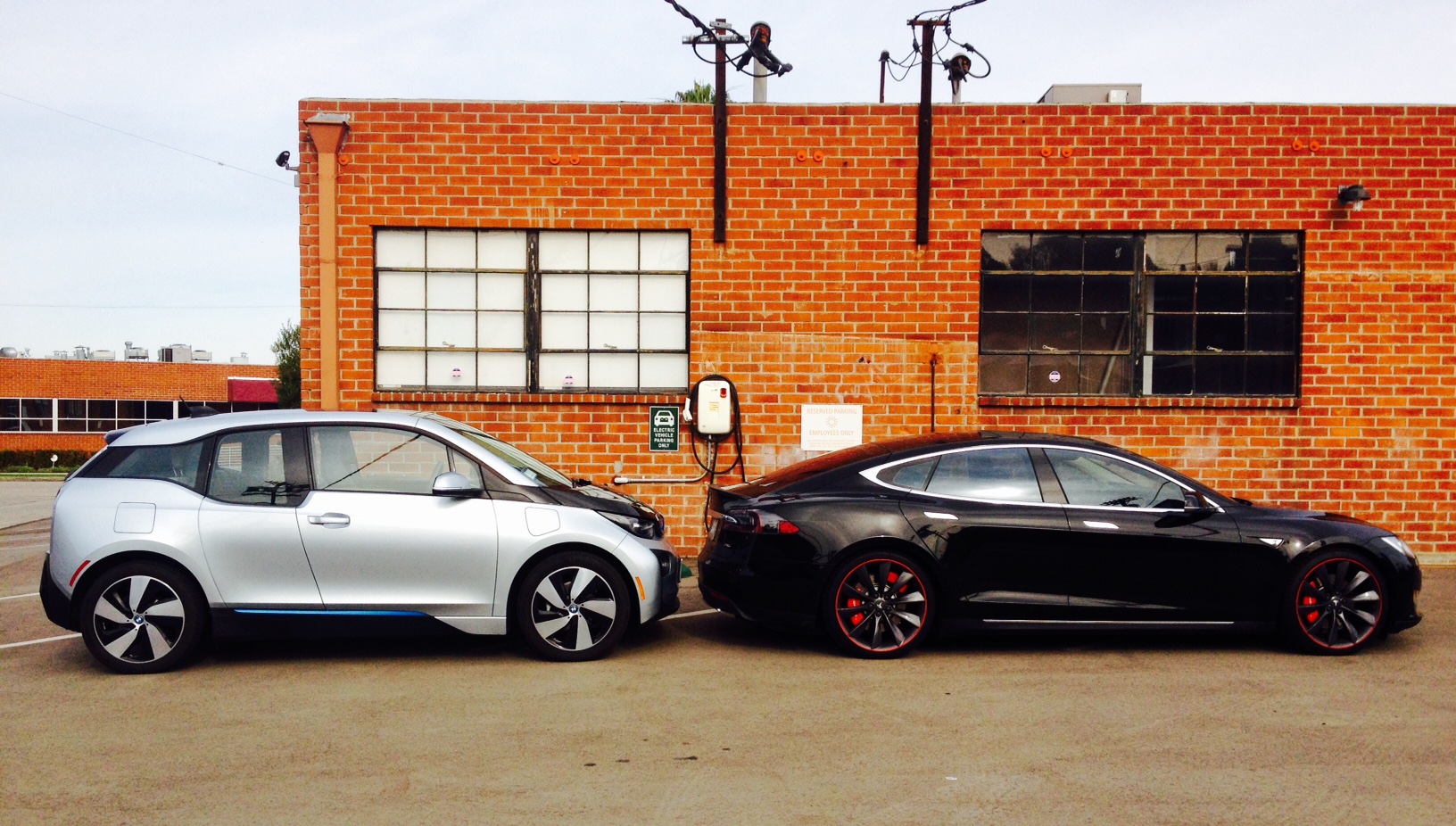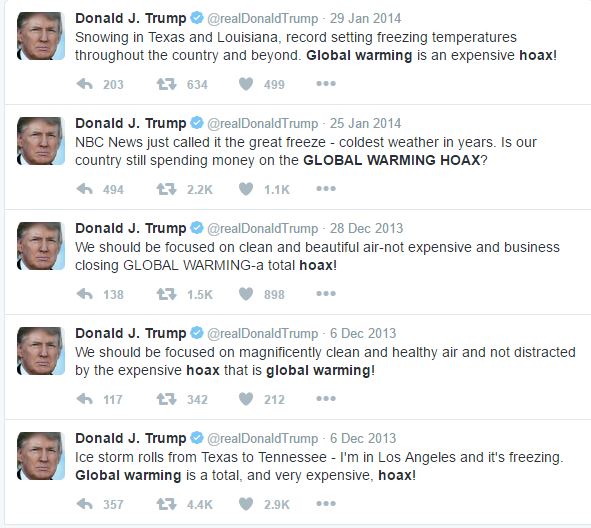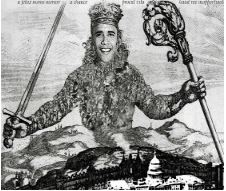News
What will happen to Obama’s National EV Charging Corridor initiative?

As part of an eight year commitment to combat climate change, increase access to clean energy technologies, and reduce U.S. dependence on oil, the Obama administration unveiled a series of executive actions to establish 48 national electric vehicle (EV) charging corridors on U.S. highways. But will the proposed EV charging corridors, which were announced in early November, 2016, stand up to the formidable will of Donald Trump’s transitional head of the EPA, Myron Ebell?
Ebell is director of the Center for Energy and Environment at the conservative Competitive Enterprise Institute and is the lead voice of U.S. climate deniers. He chairs the Cooler Heads Coalition, which comprises over two dozen non-profit groups in this country and abroad that question global warming “alarmism” and oppose “energy rationing” policies. Ebell’s role on the Trump team has been interpreted by many, including Scientific American, National Geographic, and the New York Times, as a sign that the next administration will be looking to drastically reshape the climate policies that the EPA has pursued under the Obama administration.
Since President Obama took office, the number of plug-in EV models has increased from one to more than twenty, battery costs have decreased 70 percent, and the number of EV charging stations has grown from less than 500 in 2008 to more than 16,000 in 2016. Described as “creating a new way of thinking about transportation that will drive America forward,” the National Electric Vehicle Charging Corridors on U.S. Highways initiatives were intended to create 48 designated EV routes which would cover nearly 25,000 miles in 35 states.
The National Electric Vehicle Charging Corridors on U.S. Highways initiative is part of a larger Obama administration plan to lower EV purchase costs through increasing automotive manufacturers’ demand. By promoting EV innovation and adoption and expanding the national EV infrastructure, the Obama administration has fostered a climate in which more than $1 million and 1,211,650 gallons in potential annual fuel savings could be accrued. However, Trump has indicated that his administration will work to remove EPA environmental regulations as a way of allowing American business to thrive.
Trump consistently has been vocal in his skepticism of climate change science, which calls for the shift in U.S. fuel consumption to alternative sources like decentralized electricity.

While on the campaign trail, Trump had focused on lifting restrictions on oil and gas instead of looking to U.S. clean energy and an eventual reduction of reliance on fossil fuels. Trump stated that lifting fossil fuel restrictions would increase GDP by more than $127 billion, add about 500,000 jobs, and increase wages by $30 billion each year over over seven years. Those figures come from the Institute for Energy Research, a nonprofit that advocates for a free-market approach to energy and claims there is an “enormous volume of sensationalized, simplistic and often plain wrong information” on climate change.
“This is not academic research and would never see the light of day in an academic journal. The pioneering research … from years ago is rarely employed any more by economists,” said Thomas Kinnaman, chair of the Economics Department at Bucknell University, who reviewed the IER report. Kinnaman’s analysis was confirmed by Peter Maniloff, assistant professor of economics at the Colorado School of Mines, who said the IER study is based on a questionable assumption. “The IER report assumes that policy restrictions are the major factor holding back coal, oil, and gas production.” He went on to describe the rationale as more to do with straightforward economics,” he said. “Domestic oil drilling on available land has dropped by three-quarters since 2014 due to low prices.”
Another area in which the Obama administration sought to promote EV clean energy was the release of up to $4.5 billion in loan guarantees to support commercial-scale deployment of innovative EV charging facilities. In support, nearly 50 industry members signed onto a “Guiding Principles to Promote Electric Vehicles and Charging Infrastructure” agreement. Thirty-eight new businesses, non-profits, universities, and utilities committed to provide EV charging access for their workforces, with 24 state and local governments partnering with the Administration to increase the procurement of EVs in their fleets.
Investment in such a robust network of charging facilities contradicts energy policy promoted by Ebell, who has said that “a lot of third, fourth and fifth rate scientists have gotten a long ways” by embracing climate change. He frequently mocks climate leaders like Al Gore and has called the movement the “forces of darkness” because “they want to turn off the lights all over the world.”
Ebell has been a voice in the ear of Congress with his opposition to President Obama’s Clean Power Plan. This is a series of policy initiatives designed to lower emissions from fossil fuel generating plants, particularly those that still rely on coal to generate electricity. The United States Department of Transportation (DOT) would be the liaison among the administration, states, localities, and the private sector for the EV corridors. Already, 28 states, utilities, vehicle manufacturers, and change organizations have committed to accelerating the deployment of an EV charging infrastructure on the DOT’s corridors. The goal is that these initial corridors would serve as a basis for “coast to coast zero emission mobility on our nation’s highways.”

Obama caricature [Source: globalwarming.org]
Earlier, Ebell had written a blog post stating that the Obama administration’s Existing Source Performance Standards contained within the Clean Power Plan were “colossally costly” and “obviously illegal.” His post includes the mashup of President Obama.
To ascertain optimal national EV charging deployment scenarios, including along DOT’s designated fueling corridors, the United States Department of Energy (DOE) is in the midst of conducting two studies. Developed with national laboratories and with input from a range of stakeholder, the first is a national EV infrastructure analysis that identifies the optimal number of charging stations for different EV market penetration scenarios. The second will provide best practices for EV fast charging installation, including system specifications as well as siting, power availability, and capital and maintenance cost considerations.
The future of U.S. coast to coast zero emission mobility on our nation’s highways is in serious jeopardy with President Trump in the White House.

News
Nvidia CEO Jensen Huang explains difference between Tesla FSD and Alpamayo
“Tesla’s FSD stack is completely world-class,” the Nvidia CEO said.

NVIDIA CEO Jensen Huang has offered high praise for Tesla’s Full Self-Driving (FSD) system during a Q&A at CES 2026, calling it “world-class” and “state-of-the-art” in design, training, and performance.
More importantly, he also shared some insights about the key differences between FSD and Nvidia’s recently announced Alpamayo system.
Jensen Huang’s praise for Tesla FSD
Nvidia made headlines at CES following its announcement of Alpamayo, which uses artificial intelligence to accelerate the development of autonomous driving solutions. Due to its focus on AI, many started speculating that Alpamayo would be a direct rival to FSD. This was somewhat addressed by Elon Musk, who predicted that “they will find that it’s easy to get to 99% and then super hard to solve the long tail of the distribution.”
During his Q&A, Nvidia CEO Jensen Huang was asked about the difference between FSD and Alpamayo. His response was extensive:
“Tesla’s FSD stack is completely world-class. They’ve been working on it for quite some time. It’s world-class not only in the number of miles it’s accumulated, but in the way it’s designed, the way they do training, data collection, curation, synthetic data generation, and all of their simulation technologies.
“Of course, the latest generation is end-to-end Full Self-Driving—meaning it’s one large model trained end to end. And so… Elon’s AD system is, in every way, 100% state-of-the-art. I’m really quite impressed by the technology. I have it, and I drive it in our house, and it works incredibly well,” the Nvidia CEO said.
Nvidia’s platform approach vs Tesla’s integration
Huang also stated that Nvidia’s Alpamayo system was built around a fundamentally different philosophy from Tesla’s. Rather than developing self-driving cars itself, Nvidia supplies the full autonomous technology stack for other companies to use.
“Nvidia doesn’t build self-driving cars. We build the full stack so others can,” Huang said, explaining that Nvidia provides separate systems for training, simulation, and in-vehicle computing, all supported by shared software.
He added that customers can adopt as much or as little of the platform as they need, noting that Nvidia works across the industry, including with Tesla on training systems and companies like Waymo, XPeng, and Nuro on vehicle computing.
“So our system is really quite pervasive because we’re a technology platform provider. That’s the primary difference. There’s no question in our mind that, of the billion cars on the road today, in another 10 years’ time, hundreds of millions of them will have great autonomous capability. This is likely one of the largest, fastest-growing technology industries over the next decade.”
He also emphasized Nvidia’s open approach, saying the company open-sources its models and helps partners train their own systems. “We’re not a self-driving car company. We’re enabling the autonomous industry,” Huang said.
Elon Musk
Elon Musk confirms xAI’s purchase of five 380 MW natural gas turbines
The deal, which was confirmed by Musk on X, highlights xAI’s effort to aggressively scale its operations.

xAI, Elon Musk’s artificial intelligence startup, has purchased five additional 380 MW natural gas turbines from South Korea’s Doosan Enerbility to power its growing supercomputer clusters.
The deal, which was confirmed by Musk on X, highlights xAI’s effort to aggressively scale its operations.
xAI’s turbine deal details
News of xAI’s new turbines was shared on social media platform X, with user @SemiAnalysis_ stating that the turbines were produced by South Korea’s Doosan Enerbility. As noted in an Asian Business Daily report, Doosan Enerbility announced last October that it signed a contract to supply two 380 MW gas turbines for a major U.S. tech company. Doosan later noted in December that it secured an order for three more 380 MW gas turbines.
As per the X user, the gas turbines would power an additional 600,000+ GB200 NVL72 equivalent size cluster. This should make xAI’s facilities among the largest in the world. In a reply, Elon Musk confirmed that xAI did purchase the turbines. “True,” Musk wrote in a post on X.
xAI’s ambitions
Recent reports have indicated that xAI closed an upsized $20 billion Series E funding round, exceeding the initial $15 billion target to fuel rapid infrastructure scaling and AI product development. The funding, as per the AI startup, “will accelerate our world-leading infrastructure buildout, enable the rapid development and deployment of transformative AI products.”
The company also teased the rollout of its upcoming frontier AI model. “Looking ahead, Grok 5 is currently in training, and we are focused on launching innovative new consumer and enterprise products that harness the power of Grok, Colossus, and 𝕏 to transform how we live, work, and play,” xAI wrote in a post on its website.
Elon Musk
Elon Musk’s xAI closes upsized $20B Series E funding round
xAI announced the investment round in a post on its official website.

xAI has closed an upsized $20 billion Series E funding round, exceeding the initial $15 billion target to fuel rapid infrastructure scaling and AI product development.
xAI announced the investment round in a post on its official website.
A $20 billion Series E round
As noted by the artificial intelligence startup in its post, the Series E funding round attracted a diverse group of investors, including Valor Equity Partners, Stepstone Group, Fidelity Management & Research Company, Qatar Investment Authority, MGX, and Baron Capital Group, among others.
Strategic partners NVIDIA and Cisco Investments also continued support for building the world’s largest GPU clusters.
As xAI stated, “This financing will accelerate our world-leading infrastructure buildout, enable the rapid development and deployment of transformative AI products reaching billions of users, and fuel groundbreaking research advancing xAI’s core mission: Understanding the Universe.”
xAI’s core mission
Th Series E funding builds on xAI’s previous rounds, powering Grok advancements and massive compute expansions like the Memphis supercluster. The upsized demand reflects growing recognition of xAI’s potential in frontier AI.
xAI also highlighted several of its breakthroughs in 2025, from the buildout of Colossus I and II, which ended with over 1 million H100 GPU equivalents, and the rollout of the Grok 4 Series, Grok Voice, and Grok Imagine, among others. The company also confirmed that work is already underway to train the flagship large language model’s next iteration, Grok 5.
“Looking ahead, Grok 5 is currently in training, and we are focused on launching innovative new consumer and enterprise products that harness the power of Grok, Colossus, and 𝕏 to transform how we live, work, and play,” xAI wrote.








